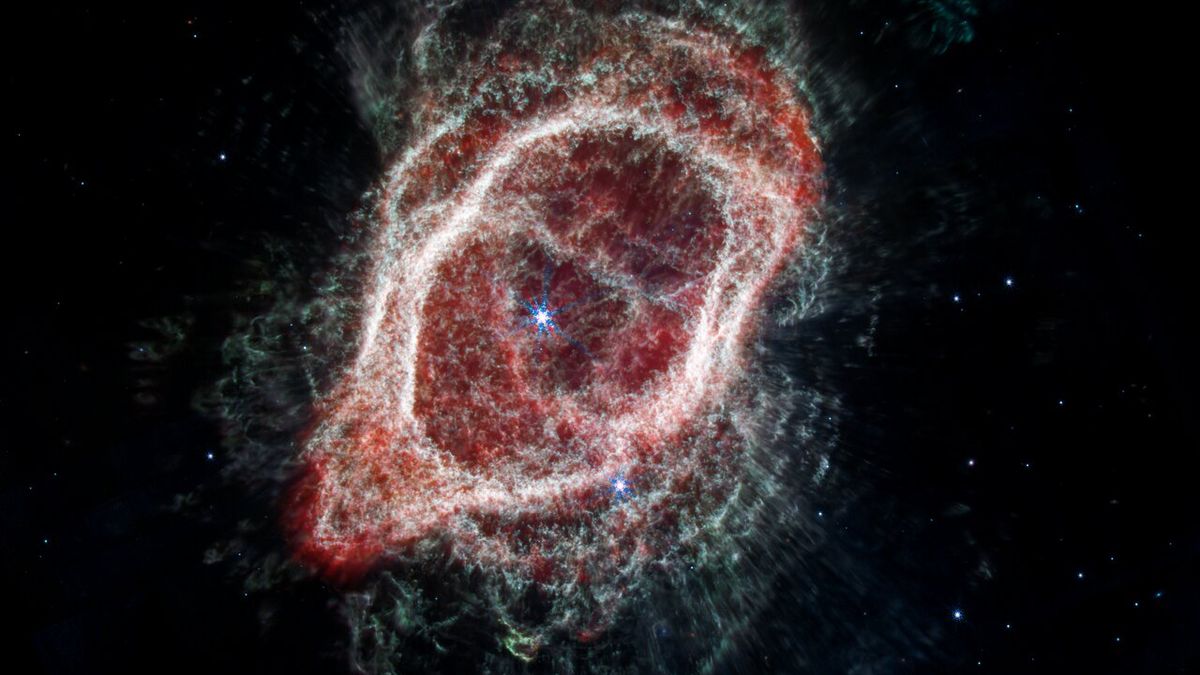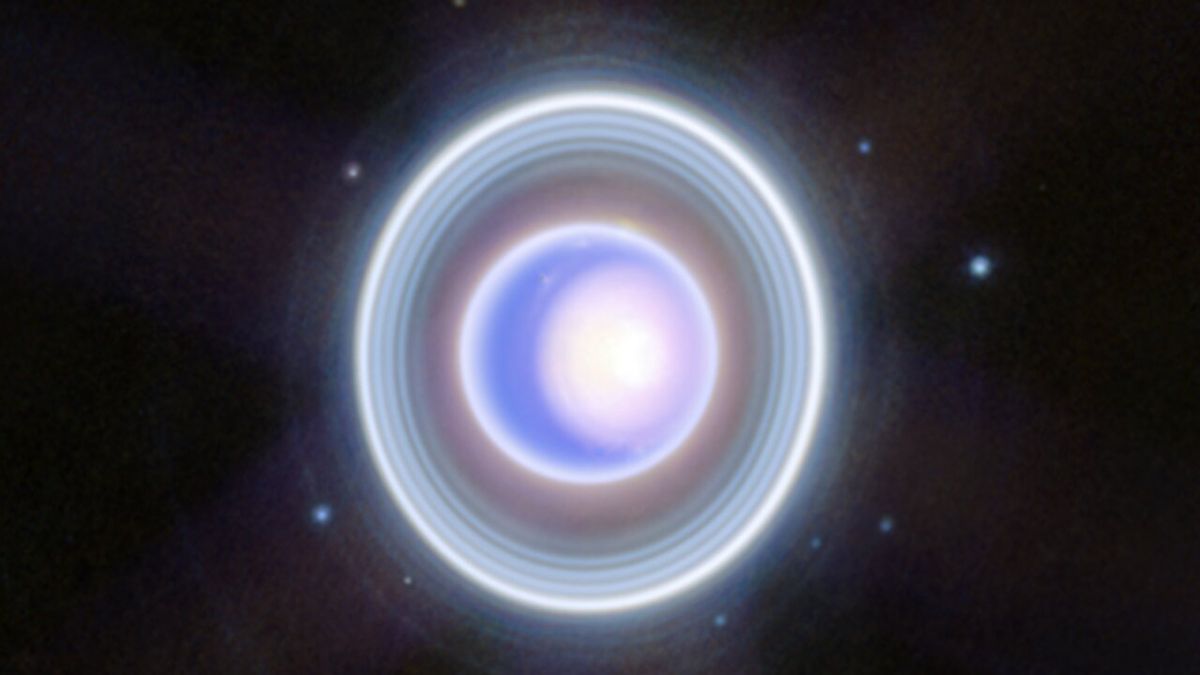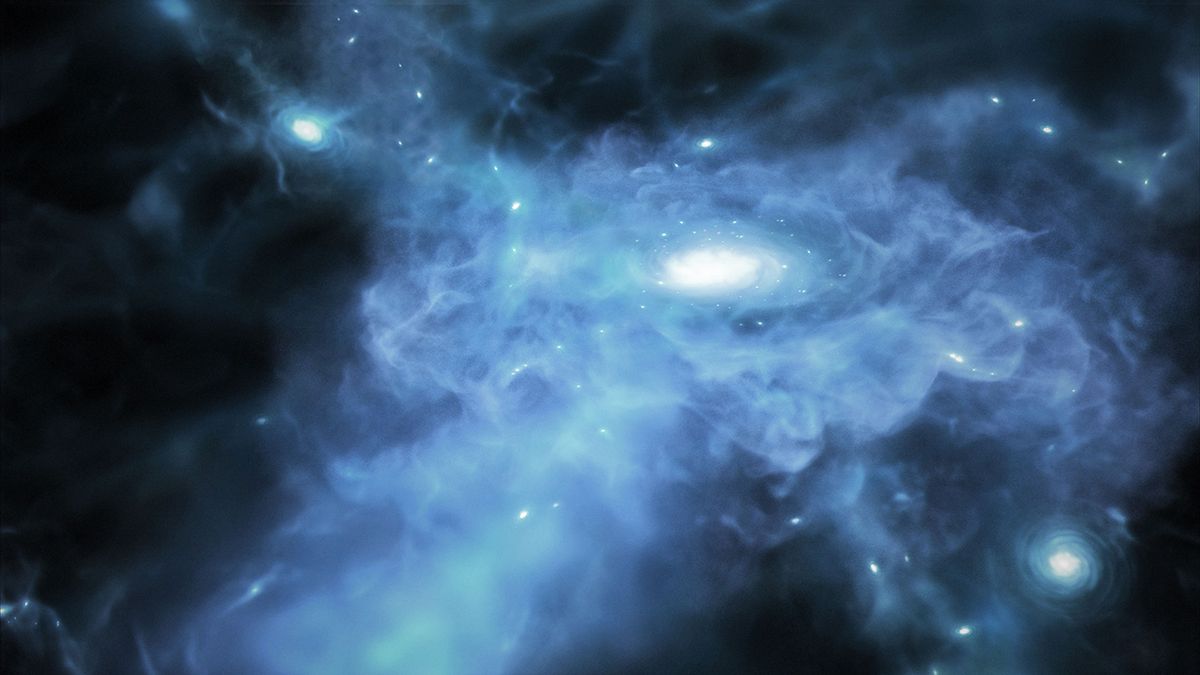The Southern Ring Nebula: Unveiling the Mysteries of a Dying Star
The Southern Ring Nebula stands as a breathtaking cocoon enveloping a dying star, revealing a hidden secret that has intrigued scientists. The nebula showcases a distinctive double-ring structure, hinting at the possibility of not just one but potentially three stars at its core.
Discovering the Southern Ring Nebula
Referred to as NGC 3132, the Southern Ring Nebula is classified as a planetary nebula, located approximately 2,000 light-years away in the Vela constellation. Despite its name, planetary nebulas have no direct connection to planets. Instead, they signify the final exhalation of sun-like stars in their last stages of life, evolving within a nebulous chrysalis before eventually transitioning into white dwarfs. Nebulas form from the outer envelope of the dying star, expelled into space following its red giant phase.
In December 2022, the James Webb Space Telescope captured a striking image of the Southern Ring Nebula, unveiling molecular hydrogen gas composing the nebula’s “exoskeleton.” This exoskeleton consists of warm gas emitting temperatures around 1,000 kelvin, illuminated and heated by ultraviolet light emanating from the white dwarf. However, this representation accounts for only a fraction of the molecular gas present in the nebula.
Scientific Investigation by Joel Kastner
Joel Kastner, leading a team from the Rochester Institute of Technology, embarked on an exploration to uncover more of the nebula’s molecular composition. Their efforts focused on detecting carbon monoxide gas within the nebula using the Submillimeter Array stationed on Mauna Kea in Hawaii. Carbon monoxide, intermixed with hydrogen and other molecules within the nebula, serves as a critical proxy for identifying these molecular constituents indirectly.
The Submillimeter Array successfully determined the distribution and velocities of carbon monoxide molecules, delineating movements toward and away from the observer. Kastner emphasized the synergy between the James Webb Space Telescope’s observation of hydrogen molecules and the Submillimeter Array’s detection of colder, unseen carbon monoxide components, shedding light on the nebula’s complex molecular architecture.
Revealing a Complex Structure
The Southern Ring Nebula derives its name from its ring-like appearance, as observed from our vantage point. Detailed analysis showcased that this ring is expanding gradually, a natural process as the nebula continues to evolve before dispersing entirely. However, insights from Kastner’s team unveiled a surprising revelation – a three-dimensional map of the nebula’s molecular exoskeleton, exposing an additional, perpendicular ring intersecting the primary one.
Further investigations led to a remarkable conclusion: the Southern Ring Nebula might house not just one or two, but plausibly three stars within its core. While the most massive star has likely reached the end of its lifecycle, the presence of a stellar trio, if confirmed, might be too proximate or dim to differentiate individually, even with advanced telescopic observations.
Theoretical Musings and Astronomical Implications
There is mounting evidence that planetary nebulas with intricate structures may arise from the influence of companion stars on the central dying star. In the case of the Southern Ring Nebula, Kastner’s team speculates a triple system consisting of a close binary orbited by a distant third star, within a restricted orbital radius span of 60 astronomical units from the binary.
This binary configuration gives rise to distinct features, such as the narrow-waisted, bi-lobed structure observed in the nebula. The collation of material shed by the dying star, corralled by the binary companion, evidences a polar emission pattern instead of the typical equatorial expulsion, forming the dual lobes. Supporting this interpretation are mid-infrared observations from the James Webb Space Telescope, revealing an excess of infrared emissions indicative of a dusty disk engendered by interactions between the red giant and the close binary companion.
While this elucidates the origin of the primary ring, the source of the secondary ring remains ambiguous. Although the nebula exhibits a bi-lobed appearance, suggesting an ellipsoidal material shell ejected by the red giant, higher-order dynamics associated with a potential third star may contribute to the formation of the enigmatic second ring.
Philosophical Reflections and Cosmic Significance
Beyond the spectacle of stellar demise, planetary nebulas bear the promise of cosmic renewal. The synthesis of essential elements like carbon, oxygen, and nitrogen occurs within sun-like stars nearing the end of their lives, exemplified by the Southern Ring Nebula’s genesis. As these expanding nebulas disperse into interstellar realms, they scatter vital molecules throughout space, ultimately seeding giant molecular clouds that foster stellar and planetary formation.
Contemplating the profound interconnectedness of stellar evolution and planetary genesis, Kastner muses on the fundamental query – where do the predominant elements in the universe originate? Highlighting the astronomical provenance rooted in dying stars, he underscores the transformative role of stellar remnants in nurturing new cosmic habitats.
From the cascading molecular remnants of planetary nebulas, intricately dispersed across cosmic terrains, emerges the blueprint for future celestial bodies. As we marvel at the poetic beauty of celestial transitions within nebulas like the Southern Ring, we envision a cyclical narrative of stellar reincarnation. Echoing timeless cosmic themes, this stellar cycle of birth, death, and rebirth resonates with the eternal rhythm of the universe.
The groundbreaking study was unveiled in The Astrophysical Journal, dated April 2.
Image/Photo credit: source url





